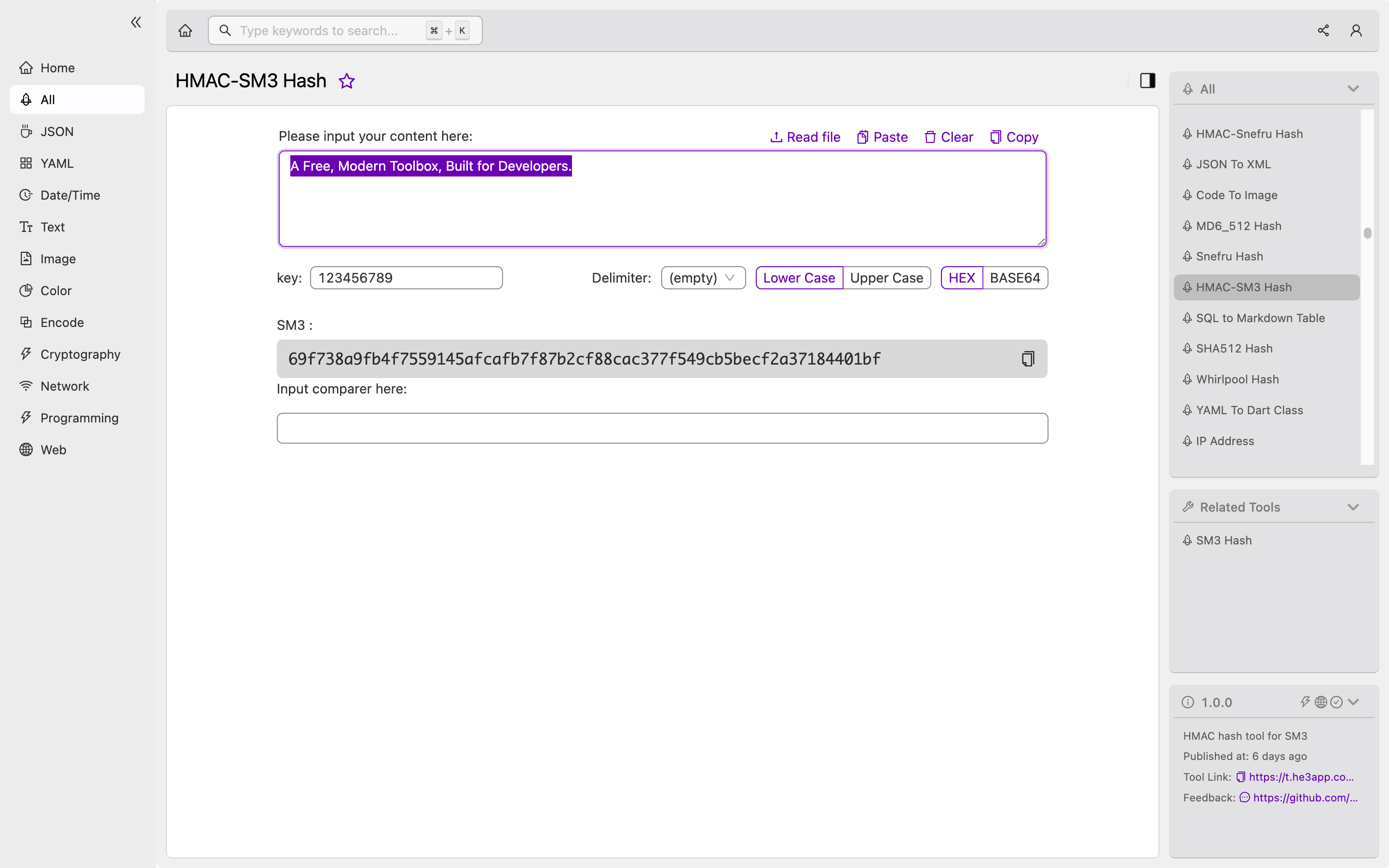Introduction
As technology advances, so do the threats to cybersecurity. To counter these threats, developers use secure hash algorithms like HMAC-SM3 Hash. This is a cryptographic hash function designed for data integrity and authentication purposes. In this article, we will discuss the concept, working, features, and practical scenarios of HMAC-SM3 Hash.
What is HMAC-SM3 Hash?
HMAC-SM3 Hash is a cryptographic hash function developed by the Chinese National Cryptography Administration (CNCA) in 2012. It is based on the Secure Hash Algorithm (SHA) family with a hash output size of 256 bits. HMAC-SM3 Hash uses a secret key to generate a message authentication code (MAC) that helps verify the integrity of the passed data. HMAC-SM3 Hash is an effective crypto tool for data integrity and authentication purposes.
How HMAC-SM3 Hash Works?
HMAC-SM3 Hash generates a MAC using a secret key and a hash function. The process involves five steps:
-
Key Generation: Generate a secret key for HMAC-SM3 Hash. The key should be secure, and the user must keep it confidential.
-
Message Padding: Pad the message to be hashed with additional bits to ensure its length is a multiple of 512 bits.
-
Hashing: Apply the SM3 hash function to the padded message.
-
Key Modification: Modify the secret key to match the hash output size.
-
Finalization: Apply the SM3 hash function again with the newly modified secret key and hashed message. This results in a MAC.
Code Samples for HMAC-SM3 Hash
To generate an HMAC-SM3 Hash in Python, use the following code snippet:
import hmac
import hashlib
message = b"Hello World"
secret_key = b"my-secret-key"
hmac_digest = hmac.new(secret_key, message, hashlib.sha256).hexdigest()
print(hmac_digest)To generate an HMAC-SM3 hash in Java, use the following code snippet:
import java.security.Key;
import java.security.NoSuchAlgorithmException;
import javax.crypto.Mac;
import javax.crypto.spec.SecretKeySpec;
public class HMACSample {
public static void main(String[] args) throws NoSuchAlgorithmException {
byte[] key = "my-secret-key".getBytes();
byte[] message = "Hello World".getBytes();
Mac mac = Mac.getInstance("HmacSM3");
Key secretKey = new SecretKeySpec(key, "HmacSM3");
mac.init(secretKey);
byte[] hmacDigest = mac.doFinal(message);
System.out.println(javax.xml.bind.DatatypeConverter.printHexBinary(hmacDigest));
}
}Or you can use HMAC-SM3 Hash tool in He3 Toolbox (https://t.he3app.com?g81y ) easily.

Scenarios for Developers
HMAC-SM3 Hash is a versatile tool for developers, and it has several practical scenarios. Some of these scenarios include:
-
Data Authentication: Use HMAC-SM3 Hash to verify that the data you received is authentic and unaltered.
-
Password Storage: Use HMAC-SM3 Hash to store passwords securely. The hashed password is stored in the database.
-
Digital Signatures: Use HMAC-SM3 Hash to sign digital certificates and documents to verify their authenticity.
Key Features of HMAC-SM3 Hash
HMAC-SM3 Hash has several unique features that make it ideal for use in cryptography and cybersecurity. These features include:
-
Collision Resistance: HMAC-SM3 Hash is collision-resistant, meaning that it is difficult to find two messages that produce the same hash value.
-
Keyed Hashing: HMAC-SM3 Hash uses a secret key to generate a MAC, making it suitable for data authentication purposes.
-
Secure Hash Algorithm: HMAC-SM3 Hash is a member of the Secure Hash Algorithm (SHA) family, making it a reliable cryptographic hash function.
Misconceptions and FAQs
Is HMAC-SM3 Hash the same as SHA-256?
No, HMAC-SM3 Hash and SHA-256 are two separate hash functions. While they share similar features, HMAC-SM3 Hash has a different hash output size and uses a secret key to generate a MAC.
Can I use any key size for HMAC-SM3 Hash?
No, the key size for HMAC-SM3 Hash must be equal to the hash output size (256 bits).
Conclusion
HMAC-SM3 Hash is a secure hash algorithm that helps maintain data integrity and authentication. It is ideal for use in cryptography and cybersecurity applications. Developers can use HMAC-SM3 Hash to safeguard their data, store passwords securely, and sign digital documents. For more information, check out the Wikipedia page on HMAC-SM3 Hash https://en.wikipedia.org/wiki/SM3_(hash_function)#HMAC-SM3.
